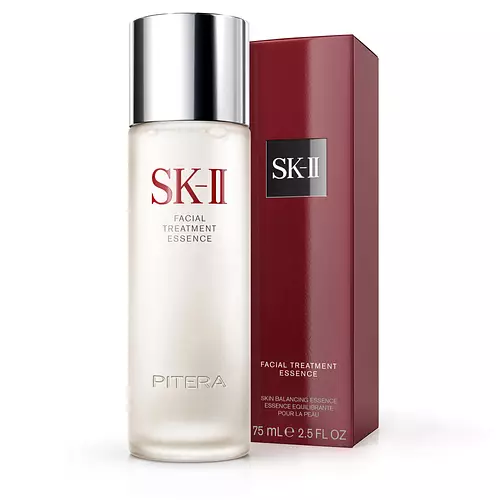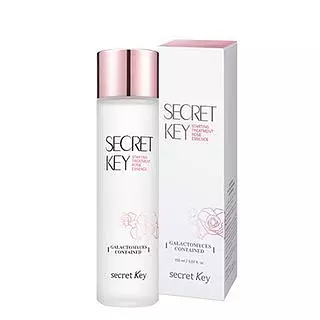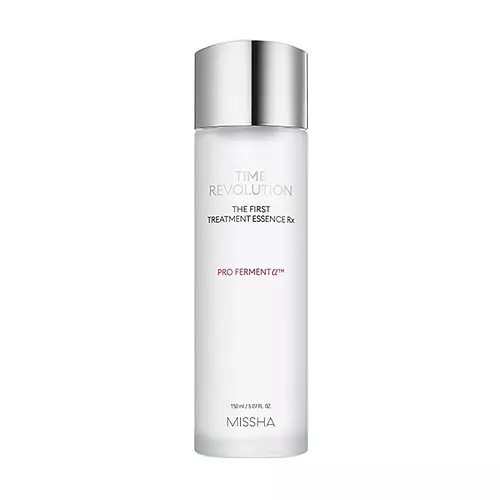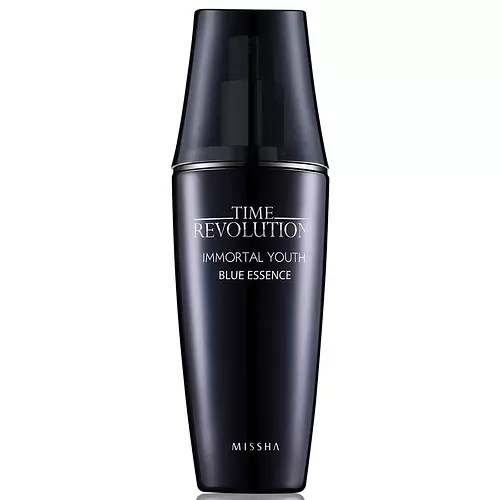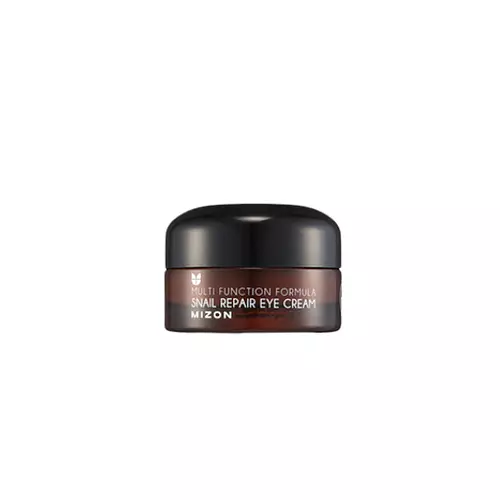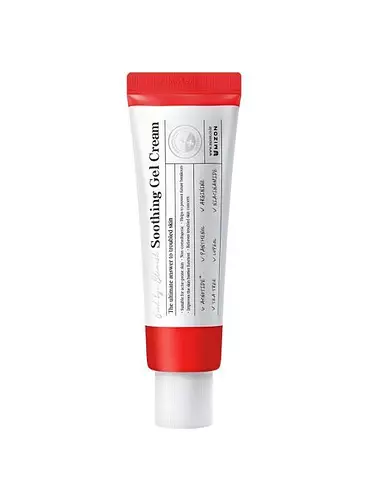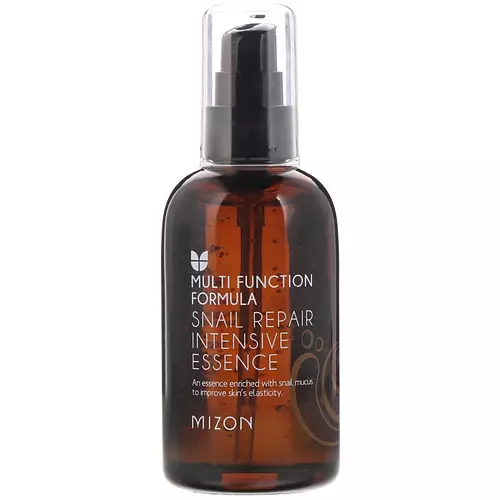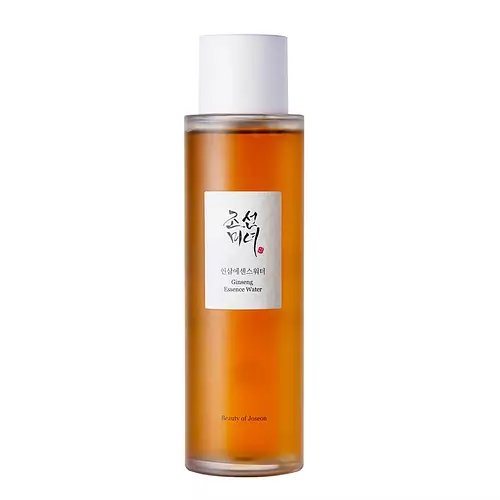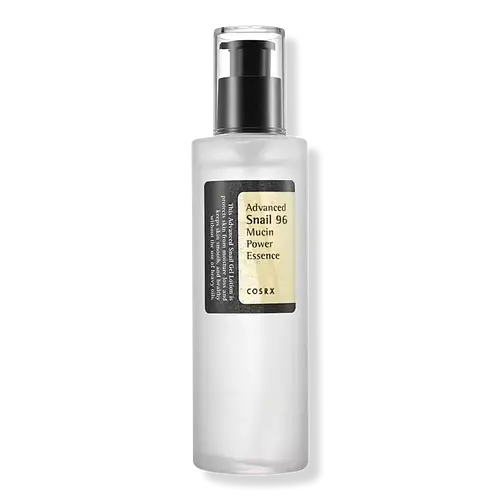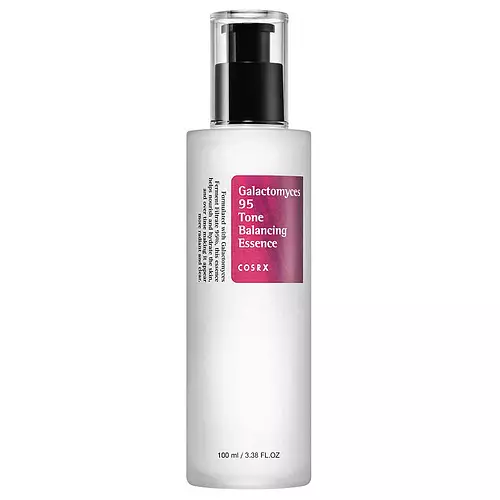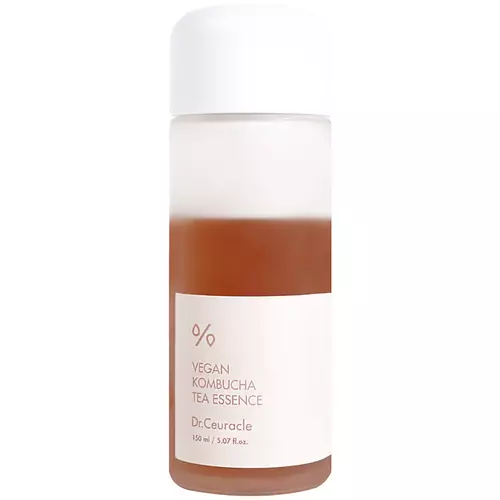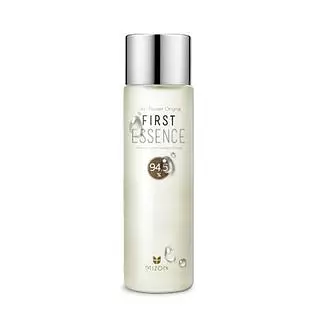
Mizon Skin Power Original First Essence Ingredients Explained
Published on November 16, 2020 Submitted by hyggeday
Overview
What it is
Essence with 32 ingredients that contains ceramides, hyaluronic acid and niacinamide
Cool Features
It is cruelty-free and reef safe
Suited For
It has ingredients that are good for fighting acne, anti aging, dry skin, brightening skin, sensitive skin, oily skin, reducing pores, scar healing and dark spots
Free From
It doesn't contain any harsh alcohols, parabens, silicones or sulfates
Fun facts
Mizon is from South Korea. This product is used in 17 routines created by our community.
We independently verify ingredients and our claims are backed by peer-reviewed research. Does this product need an update? Let us know.
Essence with 32 ingredients that contains ceramides, hyaluronic acid and niacinamide
Quick info
You should know
Notable Ingredients
This product contains 1 ingredient that may have this attribute:
This product contains 2 ingredients that may have this attribute:
This product contains 1 ingredient that may have this attribute:
Benefits
This product contains 4 ingredients that may have this attribute:
This product contains 1 ingredient that may have this attribute:
This product contains 3 ingredients that may have this attribute:
This product contains 2 ingredients that may have this attribute:
This product contains 1 ingredient that may have this attribute:
This product contains 3 ingredients that may have this attribute:
This product contains 1 ingredient that may have this attribute:
This product contains 1 ingredient that may have this attribute:
This product contains 1 ingredient that may have this attribute:
This product contains 2 ingredients that may have this attribute:
Concerns
This product contains 1 ingredient that may have this attribute:
Ingredients 32
Galactomyces Ferment Filtrate (GFF) is a yeast traditionally used to make the Japanese alcoholic beverage, sake. GFF has moisturizing and antioxidant properties.
Butylene Glycol (or BG) is used within cosmetic products for a few different reasons:
Ceramide NS is a type of Ceramide. Ceramides are intercellular lipids naturally found in our skin that bonds dead skin cells together to create a barrier. They are known for their ability to hold water and thus are a great ingredient for dry skin.
Niacinamide has emerged as an all-star ingredient due to its many benefits.
Glycerin is already naturally found in your skin. It helps moisturize and protect your skin.
Peg-60 Hydrogenated Castor Oil comes from hydrogenated castor oil. It is a solubilizer and emulsifier.
Water. It's the most common cosmetic ingredient of all. You'll usually see it at the top of ingredient lists, meaning that it makes up the largest part of the product.
Ethylhexylglycerin (we can't pronounce this either) is commonly used as a preservative and skin softener. It is derived from glyceryl.
Adenosine is in every living organism. It is one of four components in nucleic acids that helps store our DNA.
Carbomer is a polymer of acrylic acid. Its main role is to create gel consistency within products.
Xanthan gum is used as a stabilizer and thickener within cosmetic products. It helps give products a sticky, thick feeling - preventing them from being too runny.
Tromethamine is an aliphatic compound. An aliphatic compound is an organic compound with open-chained carbon atoms. It is synthetically created. Tromethamine is used to balance pH and improve texture.
Trehalose is a disaccharide made of two glucose molecules (glucose is sugar!). Trehalose is used to help moisturize skin. It also has antioxidant properties.
Cananga Odorata Flower Oil comes from the ylang-ylang flower, Cananga odorata.
Dextrin is used to thicken a product and helps bind ingredients together. It is created from starch and glycogen.
This oil is derived from the leaves of Eucalyptus Globulus, a type of Eucalyptus tree native to Australia.
Sodium Hyaluronate is hyaluronic acid's salt form. It is commonly derived from the sodium salt of hyaluronic acid.
Coriandrum Sativum Fruit Oil is a fragrance, is an oil, and isn't fungal acne safe.
Caprylic/Capric Triglyceride is an emollient, solvent, and texture enhancer. It is considered a skin-softener by helping the skin prevent moisture loss.
Phosphatidylcholine is a type of phospholipid. Phospholipids are naturally found in our skin as they are the main component of cell membranes. Phospholipids are skin-replenishing.
Glycine is an amino acid that helps build proteins. It is already present in our skin as our bodies produce them naturally.
Glutamic Acid is an amino acid that is found in all living organisms. Our bodies use this to help nerve cells in the brain communicate with other cells.
Serine is an amino acid naturally found in our body. Our bodies use amino acids to create protein.
Lysine is an essential amino acid. Your body is unable to produce it naturally and we mainly get lysine from food sources.
Arginine is an amino acid that is important for human development. Your body uses is it to produce hair keratin and skin collagen.
Threonine is an amino-acid. It helps hydrate the skin and has antioxidant benefits.
Proline is an amino-acid. It helps moisturize the skin and plays an important role in creating proteins.
Galactomyces Ferment Filtrate, Butylene Glycol, Ceramide Ns, Niacinamide, Glycerin, Peg-60 Hydrogenated Castor Oil, Water, Ethylhexylglycerin, Adenosine, Carbomer, Xanthan Gum, Tromethamine, Trehalose, Cananga Odorata Flower Oil, Juniperus Mexicana Oil, Dextrin, Theobroma Cacao Extract, Eucalyptus Globulus Leaf Oil, Sodium Hyaluronate, Coriandrum Sativum Fruit Oil, Biosaccharide Gum-4, Caprylic/Capric Triglyceride, Phosphatidylcholine, Ceramide NP, Glycine, Glutamic Acid, Serine, Lysine, Alanine, Arginine, Threonine, Proline
Ingredient Ratings
Based on the number of likes and dislikes each ingredient has received.
Ingredients Explained
Galactomyces Ferment Filtrate (GFF) is a yeast traditionally used to make the Japanese alcoholic beverage, sake. GFF has moisturizing and antioxidant properties.
Studies show GFF applied to the skin improves our skin's natural moisturizing factors (NMF). Our NMF consists of many components that naturally moisturize our skin. Having healthy NMF keeps our skin plump, protected, and hydrated.
GFF tells our skin to create more filaggrin, an important component for NMF. Filaggrin gathers all the structural proteins in our outer layer of skin and creates a tight barrier, helping to protect our skin against allergens and bacteria. This also helps prevent moisture loss.
Thanks to its antioxidant properties, GFF also protects our skin against oxidative stress and UV induced inflammation. One study found GFF helped regulate sebum and keratin in participants.
GFF may not be fungal-acne safe. We recommend speaking with a professional if you have concerns.
Many components of sake, such as GFF, are studied for their anti-aging benefits today. This is because sake brewers are known to have youthful hands.
Learn more about Galactomyces Ferment FiltrateButylene Glycol (or BG) is used within cosmetic products for a few different reasons:
- It is a solvent, meaning that it helps to dissolve other ingredients. This also enhances the absorption of the product into one's skin.
- It is a humectant, which means that it helps attract moisture into the skin.
- It helps improve product application.
Overall, Butylene Glycol is a safe and well-rounded ingredient. It is unlikely to irritate skin, and works well with pretty much all other ingredients.
Ceramide NS is a type of Ceramide. Ceramides are intercellular lipids naturally found in our skin that bonds dead skin cells together to create a barrier. They are known for their ability to hold water and thus are a great ingredient for dry skin.
Ceramide NG,Ceramide NS,1,3-Hexadecanediol, 2-Hexadecanamide,Palmitoyl-C16-Dihydrosphingosine,1-Stearoyl-C18-Sphingosine
Niacinamide has emerged as an all-star ingredient due to its many benefits.
It is known to treat acne by reducing inflammation. It also helps fade dark-spots and strengthen the skin by promoting the growth of the ceramide barrier.
Other benefits include smoothing wrinkles and minimizing redness.
The cherry on top? Niacinamide can also help build keratin, a protein that keeps skin firm.
When incorporating niacinamide into your routine, look out for concentration amounts. Typically, 5% niacinamide provides benefits such as fading dark spots. However, if you have sensitive skin, it is better to begin with a smaller concentration.
Niacinamide can be mixed with other ingredients to boost benefits. For instance, it has shown to be effective when used with copper, folic acid, and zinc to treat acne.
Learn more about NiacinamideGlycerin is already naturally found in your skin. It helps moisturize and protect your skin.
A study from 2016 found glycerin to be more effective as a humectant than AHAs and hyaluronic acid.
As a humectant, it helps the skin stay hydrated by pulling moisture to your skin. The low molecular weight of glycerin allows it to pull moisture into the deeper layers of your skin.
Hydrated skin improves your skin barrier; Your skin barrier helps protect against irritants and bacteria.
Glycerin has also been found to have antimicrobial and antiviral properties. Due to these properties, glycerin is often used in wound and burn treatments.
In cosmetics, glycerin is usually derived from plants such as soybean or palm. However, it can also be sourced from animals, such as tallow or animal fat.
This ingredient is organic, colorless, odorless, and non-toxic.
Glycerin is the name for this ingredient in American English. British English uses Glycerol/Glycerine.
Learn more about GlycerinPeg-60 Hydrogenated Castor Oil comes from hydrogenated castor oil. It is a solubilizer and emulsifier.
As a solubilizer, it helps dissolve ingredients into a water-based version. It is also an emulsifer. Emulsifier help prevent oils and water from separating. Both these properties help create evenly-spread and uniform products.
Basically, Peg-60 Hydrogenated Castor Oil helps hold ingredients together.
Learn more about Peg-60 Hydrogenated Castor OilWater. It's the most common cosmetic ingredient of all. You'll usually see it at the top of ingredient lists, meaning that it makes up the largest part of the product.
So why is it so popular? Water most often acts as a solvent - this means that it helps dissolve other ingredients into the formulation.
You'll also recognize water as that liquid we all need to stay alive. Talk about multi-purpose! If you see this, drink a glass of water. Stay hydrated!
Learn more about WaterEthylhexylglycerin (we can't pronounce this either) is commonly used as a preservative and skin softener. It is derived from glyceryl.
You might see Ethylhexylglycerin often paired with other preservatives such as phenoxyethanol. Ethylhexylglycerin has been found to increase the effectiveness of these other preservatives.
Adenosine is in every living organism. It is one of four components in nucleic acids that helps store our DNA.
Adenosine has many benefits when used. These benefits include hydrating the skin, smoothing skin, and reducing wrinkles. Once applied, adenosine increases collagen production. It also helps with improving firmness and tissue repair.
Studies have found adenosine may also help with wound healing.
In skincare products, Adenosine is usually derived from yeast.
Learn more about AdenosineCarbomer is a polymer of acrylic acid. Its main role is to create gel consistency within products.
Carbomer is commonly found in many types of cosmetics products. It is found to be safe in concentrations up to 15%. However, a high amount of carbomer can cause pilling or balling up of products. Most products contain 1% of less of carbomer.
Xanthan gum is used as a stabilizer and thickener within cosmetic products. It helps give products a sticky, thick feeling - preventing them from being too runny.
On the technical side of things, xanthan gum is a polysaccharide - a combination consisting of multiple sugar molecules bonded together.
Xanthan gum is a pretty common and great ingredient. It is a natural, non-toxic, non-irritating ingredient that is also commonly used in food products.
Learn more about Xanthan GumTromethamine is an aliphatic compound. An aliphatic compound is an organic compound with open-chained carbon atoms. It is synthetically created. Tromethamine is used to balance pH and improve texture.
As an emulsifier, Tromethamine prevents oil and water ingredients from separating. This helps stabilize the product and elongate a product's shelf life. Tromethamine also makes a product thicker.
Tromethamine helps balance the pH level of a product. Normal pH level of skin is slightly acidic (~4.75-5.5). The acidity of our skin is maintained by our glands and skin biome. Being slightly acidic allows our skin to create an "acid mantle". This acid mantle is a thin barrier that protects our skin from bacteria and contaminants.
Oral Tromethanmine is an anti-inflammatory drug but plays the role of masking, adding fragrance, and/or balancing pH in skincare.
1,3-Propanediol, 2-amino-2-(hydroxymethyl)-
Learn more about TromethamineTrehalose is a disaccharide made of two glucose molecules (glucose is sugar!). Trehalose is used to help moisturize skin. It also has antioxidant properties.
As a humectant, trehalose helps draw moisture from the air to your skin. This helps keep your skin hydrated.
Due to its antioxidant properties, trehalose may help with signs of aging. Antioxidants help fight free-radical molecules, unstable molecules that may damage your skin.
In medicine, trehalose and hyaluronic acid are used to help treat dry eyes.
Some animals, plants, and bacteria create trehalose as a source of energy to survive freeze or lack of water.
Learn more about TrehaloseCananga Odorata Flower Oil comes from the ylang-ylang flower, Cananga odorata.
Ylang-ylang oil has slight antibacterial, antioxidant and antifungal properties. However, it also contains a number of sensitizing ingredients such as geraniol, limonene, linalool and benzyl benzoate. These compounds are known EU allergens.
The composition of this ingredient depends on the source. Luxury perfumes tend to use higher grade ylang-ylang for their fragrance. Lower grade ylang-ylang is less fragrant.
Learn more about Cananga Odorata Flower OilJuniperus Mexicana Oil is an oil.
Dextrin is used to thicken a product and helps bind ingredients together. It is created from starch and glycogen.
As an emulsifier, dextrin prevents ingredients from separating. This helps elongate a product's shelf life.
Studies show coating UV filters with dextrin prevents these ingredients from being absorbed. This helps UV ingredients last longer on the skin.
Learn more about DextrinThis ingredient is extracted from the seeds of the cocoa tree.
Cacao seeds contain antioxidants known as polyphenols. These include flavonoids, procyanidins, and epicatechins.
Studies show these polyphenols help improve skin health.
The more famous ingredient from cocoa tree is cocoa butter.
Learn more about Theobroma Cacao ExtractThis oil is derived from the leaves of Eucalyptus Globulus, a type of Eucalyptus tree native to Australia.
Though this oil shows antibacterial and antioxidant activity, it is also a known skin-irritant due to its fragrance components.
Sodium Hyaluronate is hyaluronic acid's salt form. It is commonly derived from the sodium salt of hyaluronic acid.
Like hyaluronic acid, it is great at holding water and acts as a humectant. This makes it a great skin hydrating ingredient.
Sodium Hyaluronate is naturally occurring in our bodies and is mostly found in eye fluid and joints.
These are some other common types of Hyaluronic Acid:
Learn more about Sodium HyaluronateCoriandrum Sativum Fruit Oil is a fragrance, is an oil, and isn't fungal acne safe.
This is a fermented gum derived from sorbitol, a sugar alcohol.
According to a manufacturer, this ingredient's high molecular weight makes it an effective emollient.
Emollients help keep the skin hydrated by preventing water from evaporating.
Learn more about Biosaccharide Gum-4Caprylic/Capric Triglyceride is an emollient, solvent, and texture enhancer. It is considered a skin-softener by helping the skin prevent moisture loss.
Within a product, Caprylic Triglyceride can thicken the product and make spreadability easier by dissolving clumping compounds. An added benefit of Caprylic Triglyceride is its antioxidant properties.
Caprylic Triglyceride is made by combining glycerin with coconut oil, forming a clear liquid. Caprylic Triglyceride has not been found to be toxic for human use in concentrations under 50%.
While there is an assumption Caprylic Triglyceride can clog pores due to it being derived from coconut oil, there is no research supporting this.
Learn more about Caprylic/Capric TriglyceridePhosphatidylcholine is a type of phospholipid. Phospholipids are naturally found in our skin as they are the main component of cell membranes. Phospholipids are skin-replenishing.
This ingredient can be found in the Lecithin of soybeans.
Ceramide NP is a type of ceramide.
Ceramides are intercellular lipids naturally found in our skin that bonds dead skin cells together to create a barrier. They are known for their ability to hold water and thus are a great ingredient for dry skin.
Ceramides are an important building block for our skin barrier. A stronger barrier helps the skin look more firm and hydrated. By bolstering the skin ceramides act as a barrier against irritating ingredients. This can help with inflammation as well.
If you would like to eat ceramides, sweet potatoes contain a small amount.
Read more about other common types of ceramides here: Ceramide AP Ceramide EOP
Learn more about Ceramide NPGlycine is an amino acid that helps build proteins. It is already present in our skin as our bodies produce them naturally.
Glycine helps keep skin hydrated and reduce signs of aging. Amino acids help transport moisture throughout our skin; glycine already plays a role in helping keep our skin moisturized.
As collagen is made up of glycine and other amino acids, it is believed Glycine may help our skin produce more collagen. Collagen helps keep skin plump and firm.
Learn more about GlycineGlutamic Acid is an amino acid that is found in all living organisms. Our bodies use this to help nerve cells in the brain communicate with other cells.
In cosmetics, glutamic acid is a famous humectant. It draws water from the air to your skin, keeping your skin hydrated (like hyaluronic acid).
An in-vitro study from 2024 found glutamic acid to play a role in inhibiting inflammation and thus a potential skin-soothing ingredient.
Other studies show it to be have potential wound healing, skin barrier repair, and hair growth properties.
Glutamic acid has poor solubility in water and other solvents.
Learn more about Glutamic AcidSerine is an amino acid naturally found in our body. Our bodies use amino acids to create protein.
Amino-acids help give keep our skin hydrated. They play an important role in the skin barrier, which keeps the skin plump and firm.
Serine is a non-essential amino acid, meaning we don't need to obtain it from eating foods.
Learn more about SerineLysine is an essential amino acid. Your body is unable to produce it naturally and we mainly get lysine from food sources.
Our bodies use lysine for growth and tissue repair. The skin uses amino acids as a precursor for building protein, and therefore keratins, collagen and elastin.
Alanine is an amino acid and is already found in the human body.
Alanine has antioxidant properties and can help with anti-aging.
Alanine is used by fibrous proteins such as collagen, elastin, and keratin. These three help make a strong skin barrier. Having a healthy skin barrier leads to more plump and youthful skin.
Learn more about AlanineArginine is an amino acid that is important for human development. Your body uses is it to produce hair keratin and skin collagen.
As a cosmetic ingredient, Arginine has antioxidant properties and can also help repair damaged skin. This ingredient is derived either synthetically or from animals.
Arginine isn't fungal acne safe when used in the presence of other lipids (fats, fatty acids, oils, esters, etc). Oils and fats occur naturally within the skin, so take caution when using Arginine if you're prone to fungal acne.
Learn more about ArginineThreonine is an amino-acid. It helps hydrate the skin and has antioxidant benefits.
Threonine is vital for creating collagen and elastin. Collagen and elastin support youthful and firm skin. Our bodies decrease collagen production naturally with age.
Humans are not able to create threonine and must get it through eating foods such as fish, lentils, poultry, sesame seeds, and more.
Learn more about ThreonineProline is an amino-acid. It helps moisturize the skin and plays an important role in creating proteins.
Proline is one of the building blocks for producing collagen. As we age, our bodies produce less collagen. Collagen helps the skin look plump and firm.
In medicine, proline is used as an osmoprotectant. This means it helps prevent oxidative degradation in other drugs.
Our bodies are able to produce proline naturally, but certain conditions may inhibit this production. In that case, proline can be obtained from eating egg whites, soy protein, dairy products, asparagus, mushrooms, and seaweed.
Learn more about ProlineWhen to use
How this product is used by our community
Directions
After washing your face, apply moderate amount and pat for absorption.
After washing your face, apply moderate amount and pat for absorption.
Compared With
Here are some products that it's often compared with
More Mizon Products
See all Mizon productsMore Essences
See all essencesWe're dedicated to providing you with the most up-to-date and science-backed ingredient info out there.
The data we've presented on this page has been verified by a member of the SkinSort Team.
Read more about us

